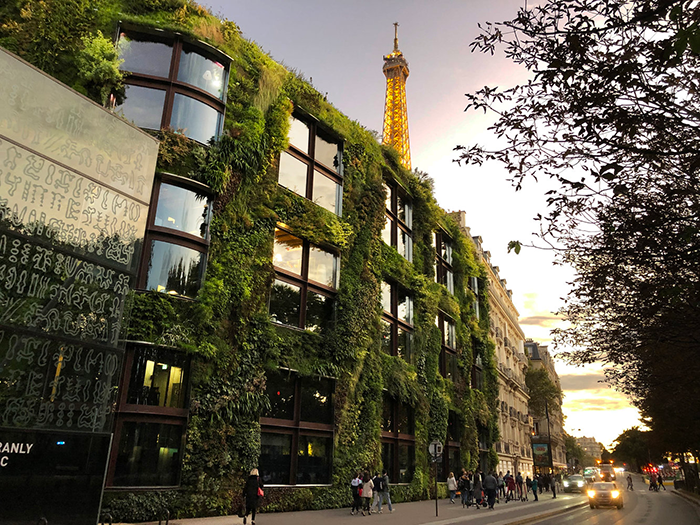The obvious purpose of a buildingтАЩs exterior walls is to support a buildingтАЩs roof and floors and mediate between indoor and outdoor conditions.
Walls usually include windows that allow natural interior lighting and outward views.
However, тАЬgreen wallsтАЭ can do more.
ItтАЩs actually an old idea.
Ivy-covered walls on heritage buildings are seen to add a touch of classy esthetics. Today, the intentional use of vegetation on a buildingтАЩs exterior is gaining increased recognition for other reasons.
тАЬThe concept of green infrastructure has been deямБned as a set of man-made elements which provide multiple environmental friendly functions at both building and urban scales,тАЭ researchers Gabriel P├йrez, Juli├а Coma, Ingrid Martorell and Luisa Cabeza.
They point out contemporary green fa├зades can improve energy efficiency by managing the buildingтАЩs interior temperature, reduce ambient temperatures outside the building, temper the urban heat island effect and reduce air-borne pollution.
The use of green infrastructure is well-established, as evidenced by the green roofs on many of todayтАЩs buildings around the world.
In fact, since 2009, the City of Toronto has on all new commercial, institutional and residential developments, including any additions, with a minimum gross floor area of 2,000 m┬▓ as well as industrial buildings with floor areas greater than 2,000 m┬▓ gross.
However, green fa├зades could have more effect on the building environment than a green roof, given that wall┬аsurface areas can be as much as 20 times greater.
The origins of the contemporary green wall can be traced to in 1938. Today, itтАЩs exemplified by the spectacular 800-square-metre green wall on the Mus├йe du Quai Branly-Jacques Chirac in Paris, featuring 15,000 cultivated plants of 150 different species.

Aside from the dramatic design statement, the researchers single out the shading effect of the vertical vegetation as its most significant contribution to building cooling.
However, there is the additional cooling effect due to the water process from the plants and substrates as well as the insulation factor.
A number of decisions need to be made when considering the incorporation of a traditional green fa├зade into a building. For example, the correct plant species must be determined based on the local climate.
тАЬThese traditional green fa├зades are made of creeper plants that climb on their own using the building fa├зade wall material as support,тАЭ the researchers explain. тАЬIn these systems, climbing plants are usually placed at the base of the building fa├зade walls and simple support systems adherent to the wall can be used.тАЭ
While this system has been long-accepted, the researchers point out todayтАЩs newer green fa├зade systems separate the plants from the fa├зade surface in order to avoid any issues associated with linking the building with living organisms.
Even double-skin green facades can be used. The secondary support structures extend the range of possible creepers, including those that use ямБliform tendrils, spines, etc., and even certain species used in agricultural food production.
Double-skin green fa├зade performance has been found to be comparable to the best results achieved by artiямБcial barriers on buildings, such as slats, blinds and awnings.
In terms of measured performance, the researchers cite studies of traditional green facades that, in all test cases, indicate exterior surface temperature reductions of building walls ranging from 1.7 C to 13.1 C in warm temperate climates and between 7.9 and 16.1 C in snow climates, regardless of the fa├зade orientation and foliage thickness.
Nevertheless, orientation can have a dramatic impact. Unsurprisingly, north-facing walls underperform other orientations.
A further benefit outlined in is the reduction of the wind tunnel effect between buildings (a.k.a. street canyons) in certain dense urban settings due to the aerodynamic disruption of vegetation on wind flow.
In simulated tests where the green coverage ratio was about 75 per cent, wind speed reductions up to 78 per cent were noted due to the drag resistance provided, in addition to measurable temperature reductions in the centre of the street canyon.
John Bleasby is a freelance writer. Send comments and Inside Innovation column ideas to editor@dailycommercialnews.com.






Recent Comments
comments for this post are closed